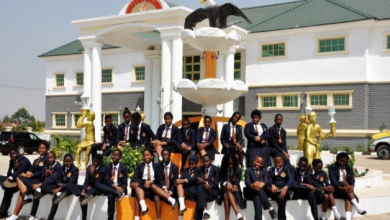
CNN’s Call to Earth joins world-renowned wildlife photographer, Chris Fallows
CITIZENS COMPASS—In a special half hour show ‘Beyond the Lens’, CNN’s Call to Earth joins world-renowned wildlife photographer and conservationist Chris Fallows as he leads an inspiring journey from South Africa to Tanzania, highlighting the threats facing some of Africa’s wild places and celebrating those working to save them.
Over the last three decades, Fallows has spent thousands of days and countless hours navigating the South African coastline in the name of science, conservation, and art. Home to over 13,000 species, a third of which only exist there, South Africa’s seas are an exceptionally rich environment.
In 1996, Fallows and a colleague were the first to document the now famous breaching great white sharks in False Bay, off the coast of Cape Town. The photos also became an important scientific tool. Fallows explains, “Over the years we recorded more than 10,400 predatory events which is by a long way the largest database of its kind in the world. From 1996 to 2018 we would see, on average, 200 to 250 different great whites every year. Since 2018, we haven’t seen a single great white shark at Seal Island.”
On the opposite end of the spectrum, humpback whale numbers have rebounded. Fallows and his wife and co-captain Monique work closely with marine biologist Mduduzi Seakamela. By taking pictures of the underside of a whale’s fluke, they can help to identify individual creatures. Seakamela describes the process, “AI enabled us to be able to do this online and almost in real time. So, because this was discovered as a very good way of identifying individual whales, we use that as one of the foolproof methods to estimate the numbers of whales that visit us.”
When it comes to taking pictures, whether they are a contribution to science or become a piece of his fine art portfolio, Fallows says there’s no better place to be, “Where else could you have had flying great white sharks, super groups of humpback whales, mega-pods of dolphins and offshore pelagic sharks, tuna, all sorts of things within the space of not even 100km. It’s an incredible landscape. It’s an incredible country, and I hope we do absolutely everything we can to protect these amazing natural assets.”
Fallows’ enthusiasm extends beyond the South African seas. CNN joins him and Monique on a trip to Tanzania. In Nyerere National Park, they meet up with fellow conservationist Brandon Kemp, a founding member of Six Rivers Africa, an initiative that aims to protect and restore biodiversity in Tanzania. He explains, “We are a one hundred percent African organisation. We’re a 96% Tanzanian organisation, and we are very proud of those facts. We believe that a lot of the issues in Africa need to be solved by Africans. We also believe that working with the local people is the only way to have a sustainable long look at these areas.”
The Six Rivers team is about to complete a project critical to their plans of reintroducing the endangered black rhino. Fallows talks about the project, “You really have to have your finger on the pulse of where the illegal activities are happening, where the wildlife densities are, and try and condense all that information into one single source so that you can tackle the problems most effectively. And that’s really at the core of what Six Rivers does. And to be able to look after such an incredible landscape for the foreseeable future, what an amazing thing to do.”
He continues, “There’s both the photographer’s eye that’s seeing these landscapes that you want to fill with iconic photographs. But then there’s also the naturalist eye that sees all the wildlife that is here in small amounts, but given time and given the protection that Brandon and the Six Rivers team is giving, this area will come back.”
Education and raising awareness in the communities surrounding the park are also a major focus for the organisation. Six Rivers ‘Eco-Clubs’ are currently active in 30 primary schools near the parks where they operate. Sheila Makindara, Head of Community Programs at Six Rivers Africa, discusses this outreach, “These students see the people in their communities doing poaching and other illegal activities. So, we don’t want them to grow up thinking that’s normal. So, we teach them alternative ways to protect wildlife and they grow up understanding the value of wildlife, and instead of wanting to become poachers they think of ways to protect it and advocate for it.”
As a self-described naturalist first, Fallows’ work combines conservation and photography. He sums up the trip to Tanzania, “My takeaway from our time in Tanzania is summed up in one word, hope. To see a team like Six Rivers doing what they’re doing, and the difference individuals and an organisation can make, should give us hope. To see the passion of all the people involved here in Tanzania, who are all working towards a common cause, should give us hope. We can still save these places, but we need to stop eating into them. But above all, like with the huge groups of humpback whales that are showing resurgence in the oceans, these intact environments in Tanzania should give us hope.”
—-CNN







